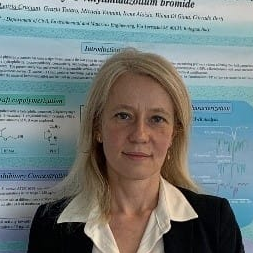Polymers from Renewable Sources and Their Mechanical Reinforcement
A special issue of Polymers (ISSN 2073-4360). This special issue belongs to the section "Polymer Physics and Theory".
Deadline for manuscript submissions: closed (30 May 2022) | Viewed by 74941
Special Issue Editors
Interests: synthesis and characterization of novel polymeric materials with particular focus on the polymers deriving from renewable materials; composites and nanocomposites; design of polymeric structures characterized by high gas barrier properties
Interests: synthesis and characterization of new polymer materials; preparation of composites and nanocomposites; polymers from renewable sources and their mechanical reinforcement with natural fibers and inorganic fillers
Special Issue Information
Dear Colleagues,
Currently, the Scientific Community has to face big concerns bound to worldwide plastic pollution and climate change due to the increment in Green House Gas emissions. Even the polymer scientists have been called to put into play their knowledge and expertise to achieve new solutions for the material production that do not impact on the environment. One possible route to answer to this demand is the development of polymers that are deriving from renewable sources, which being renewable are always available and not exhaustible as petroleum, and being usually obtained from biomass are CO2-neutral materials.
However sometimes, polymers derived from renewable sources display inadequate mechanical properties which limit their potential applications and therefore restrain their development and use. To solve these drawbacks, chemical modifications of the macromolecular structure, the addition of fibers, organic or inorganic additives or the application of physical or thermal treatments could be applied.
This Special Issue aims at highlighting the progress on the mechanical reinforcement of bioderived materials, by focusing on new additives, new blending processes or new technologies.
Dr. Micaela Vannini
Dr. Laura Sisti
Guest Editors
Manuscript Submission Information
Manuscripts should be submitted online at www.mdpi.com by registering and logging in to this website. Once you are registered, click here to go to the submission form. Manuscripts can be submitted until the deadline. All submissions that pass pre-check are peer-reviewed. Accepted papers will be published continuously in the journal (as soon as accepted) and will be listed together on the special issue website. Research articles, review articles as well as short communications are invited. For planned papers, a title and short abstract (about 250 words) can be sent to the Editorial Office for assessment.
Submitted manuscripts should not have been published previously, nor be under consideration for publication elsewhere (except conference proceedings papers). All manuscripts are thoroughly refereed through a single-blind peer-review process. A guide for authors and other relevant information for submission of manuscripts is available on the Instructions for Authors page. Polymers is an international peer-reviewed open access semimonthly journal published by MDPI.
Please visit the Instructions for Authors page before submitting a manuscript. The Article Processing Charge (APC) for publication in this open access journal is 2700 CHF (Swiss Francs). Submitted papers should be well formatted and use good English. Authors may use MDPI's English editing service prior to publication or during author revisions.
Keywords
- Biocomposites
- physical blending
- mechanical properties
- mechanical reinforcement
- renewable sources
- bioderived polymers
- fillers
- nanofillers
- fibers
Benefits of Publishing in a Special Issue
- Ease of navigation: Grouping papers by topic helps scholars navigate broad scope journals more efficiently.
- Greater discoverability: Special Issues support the reach and impact of scientific research. Articles in Special Issues are more discoverable and cited more frequently.
- Expansion of research network: Special Issues facilitate connections among authors, fostering scientific collaborations.
- External promotion: Articles in Special Issues are often promoted through the journal's social media, increasing their visibility.
- Reprint: MDPI Books provides the opportunity to republish successful Special Issues in book format, both online and in print.
Further information on MDPI's Special Issue policies can be found here.







